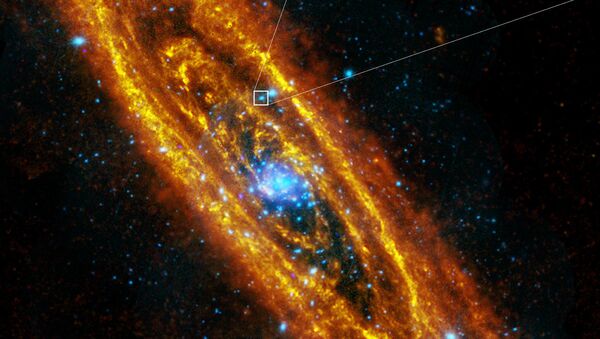A team of astronomers have discovered a massive neutron star - a rapidly spinning pulsar - approximately 4,600 light-years from Earth that is balancing on the theoretical maximum mass possible for this unique celestial object.
The scientists, members of the NANOGrav Physics Frontiers Center, used the National Science Foundation’s Green Bank Telescope (GBT) to discover that the pulsar, named J0740+6620, is the most massive neutron star ever measured, packing a mass that is 2.17 times larger than that of our Sun into a sphere that is only 30 km (18.64 miles) across.
This approaches the limits of how massive and compact an object can be without crushing itself into a black hole.
“Neutron stars are as mysterious as they are fascinating,” said Thankful Cromartie, the principal author on a paper accepted for publication in Nature Astronomy.
“These city-sized objects are so massive that their interiors take on weird properties. Finding the maximum mass that physics and nature will allow can teach us a great deal about this otherwise inaccessible realm in astrophysics,” said Cromartie, a graduate student at the University of Virginia and pre-doctoral fellow at the National Radio Astronomy Observatory in Virginia.
A neutron star is a collapsed core of a colossal star, which usually has a total mass of 10 to 29 solar masses before collapsing.
Despite their mass, neutron stars are incredibly small when it comes to their physical size, typically with a radius of about 10 kilometers, thus rendering them potentially the densest type of star in the universe.

Although scientists have been researching these unique objects for many years, for the most part they have remained shrouded in mystery, especially regarding the question at what point gravity wins over matter and forms a black hole.
The discovered that a binary system, which is almost edge-on in relation to Earth, can help astronomers calculate the mass of the two stars.
As the pulsar passes behind its white dwarf partner, there is a subtle delay in the arrival time of the signals –known as the "Shapiro time delay."
This is a classic test of general relativity.
“Neutron stars have this tipping point where their interior densities get so extreme that the force of gravity overwhelms even the ability of neutrons to resist further collapse. Each “most massive” neutron star we find brings us closer to identifying that tipping point and helping us to understand the physics of matter at these mindboggling densities,” said Scott Ransom, an astronomer at NRAO and coauthor on the paper.





